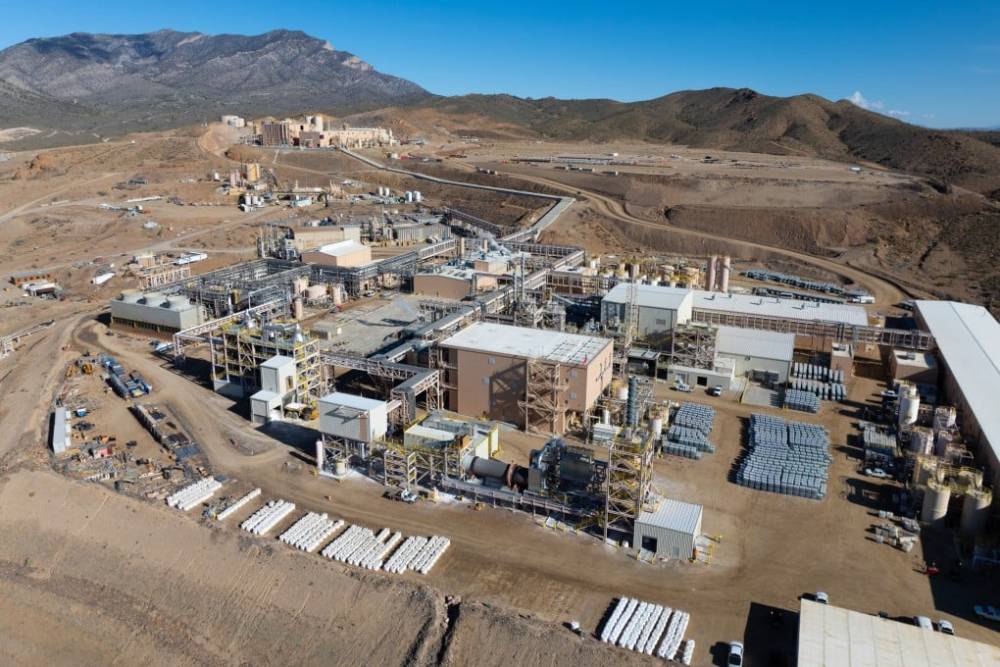
Mỹ nỗ lực thoát phụ thuộc đất hiếm Trung Quốc nhưng vấp phải rào cản công nghệ và ô nhiễm
-
Ngày 11/7/2025, Lầu Năm Góc đầu tư 400 triệu USD vào MP Materials để trở thành cổ đông lớn nhất, nhằm thúc đẩy tự chủ đất hiếm và giảm phụ thuộc vào Trung Quốc.
-
Trung Quốc chiếm 90% công suất tinh luyện đất hiếm và 69% sản lượng khai thác toàn cầu, nhờ công nghệ trung gian vượt trội và chấp nhận mức độ ô nhiễm cao.
-
CEO David Argyle (REalloys) cảnh báo Mỹ và châu Âu sẽ phải vượt qua 3 trở ngại lớn: công nghệ tinh luyện trung gian, giấy phép chính phủ và xử lý ô nhiễm, bao gồm cả chất phóng xạ.
-
REalloys là nhà cung cấp vật liệu nam châm cao cấp cho các lĩnh vực chiến lược như quốc phòng, robot, hạ tầng, hàng không điện và ngành hạt nhân.
-
Argyle dự đoán nếu có chiến lược phù hợp, Mỹ có thể tự đáp ứng 40%–50% nhu cầu đất hiếm vào năm 2027 hoặc 2028.
-
MP Materials cho biết sẽ hoàn thành nhà máy sản xuất nam châm đất hiếm vào năm 2028 với công suất 10.000 tấn.
-
Trung Quốc vẫn nắm cổ phần lớn trong MP Materials qua công ty Shenghe Resources, và là khách hàng duy nhất nhận đất hiếm từ mỏ California để tinh luyện.
-
Trong bối cảnh chiến tranh thương mại, Trung Quốc siết nguồn cung đất hiếm để gây sức ép, buộc Mỹ phải nới lỏng các hạn chế công nghệ trong cuộc đàm phán tại London vào tháng 6.
-
Nhật Bản đã tích trữ một lượng lớn nam châm trong những năm qua để phòng ngừa rủi ro, trong khi Mỹ chưa thiết lập được thị trường vật lý phi Trung Quốc để điều tiết giá.
-
Công ty Lynas (Úc), nhà sản xuất đất hiếm nặng duy nhất ngoài Trung Quốc, từng bị tranh cãi tại Malaysia do tích tụ chất thải phóng xạ, nhưng được phép tiếp tục hoạt động đến tháng 3/2026 sau khi cam kết nâng cấp công nghệ xử lý.
📌 Mỹ chi 400 triệu USD để tăng cổ phần trong MP Materials, hướng tới độc lập đất hiếm vào 2027–2028 nhưng vẫn vướng rào cản công nghệ, ô nhiễm và phụ thuộc tinh luyện vào Trung Quốc – nơi xử lý 90% đất hiếm toàn cầu. Nhật Bản đã có chiến lược tích trữ, còn Mỹ vẫn thiếu thị trường vật lý để kiểm soát giá.
https://www.scmp.com/economy/global-economy/article/3317858/rare-earth-realisation-us-must-tackle-tech-pollution-despite-pentagon-move-ceo-says
Rare earth realisation: US must tackle tech, pollution despite Pentagon move, CEO says
American supply-chain independence in the realm of critical minerals is the goal – what challenges must be overcome to get there?
Published: 5:00pm, 11 Jul 2025
The United States is scrambling to reduce its dependence on rare earths from China, with the Pentagon splashing out US$400 million on Thursday to become the largest shareholder in American miner MP Materials.
While some say the move will help wean the US off the Chinese supply, a senior American industry executive has warned that a variety of hurdles face US and European mining efforts – from securing the necessary midstream technology to obtaining government permits for what can be a highly pollutive and sometimes radioactive mining process.
“It depends upon the strategy and who’s doing it,” David Argyle, CEO of Ohio-based REalloys, said during a Zoom interview on Friday.
If all of the conditions are met, he said, “you can make big inroads, maybe achieving 40 [or] 50 per cent of the US’ strategic needs. You can probably have [the rare earth problem] solved in 2027 [or] 2028”.
REalloys delivers high-end magnet materials and magnets for US-protected markets, including the US National Defence Stockpile, US Defence Industrial Base, US Nuclear Industrial Base, robotics, electric aviation and critical infrastructure industries.
Beijing has tightened its grip over supplies of middle and heavy rare earths as leverage in its trade war with Washington, forcing the US side to ease its tech curbs during talks in London in early June.
Before the US Department of Defence’s decision to take a 15 per cent stake in MP Materials, the administration of President Donald Trump raised the idea of securing supplies from war-torn Ukraine.
And on Thursday, US Secretary of State Marco Rubio spoke to Malaysia’s prime minister about critical minerals cooperation.
Meanwhile, Argyle asked, “What is the pain that China gets for stopping exports of rare earths? … That’s leverage. China’s playing its card, and it’s playing it hard.”
That hasn’t happened in the US
David Argyle, REalloys
MP Materials, the largest American rare earth miner, said a new facility is expected to begin commissioning in 2028, with rare earth magnet manufacturing capacity reaching an estimated 10,000 metric tonnes.
“This [stake purchase] initiative marks a decisive action by the Trump administration to accelerate American supply-chain independence,” the firm’s founder and chief executive, James Litinsky, said in an online statement.
Shenghe Resources, a Shanghai-listed Chinese company, is reportedly one of MP Materials’ largest shareholders and had been the sole customer for the output of the Californian mine, suggesting that its rare earths were being sent to China for refining.
Speaking to the importance of alternatives in the rare earth supply, Argyle at REalloys said that Japan built a “significant inventory of magnets” over the past several years that “gives them some comfort [and] insurance”.
“That hasn’t happened in the US,” he added.
Argyle said a real physical market of stockpiled non-Chinese materials is needed to prevent market prices from being affected by China’s policies.
“I think, ultimately, someone will create a physical market, whether it be the US or someone else,” he added. “As we scale up our production, we’ll create a physical market where you’ll have inventory.
“If people need it, they can buy and pay whatever prices” are agreed upon by the buyers and sellers.
China processes 90 per cent of the world’s rare earth elements and accounts for 69 per cent of global mining production, as the country has a relatively high tolerance for pollution in the mining process and has a firm hold on midstream refining and purifying technology that it spent years developing.
Australia’s Lynas Rare Earth, the sole commercial producer of separated heavy rare earth products outside China, was embroiled in a dispute in Malaysia in 2023 over the accumulation of radioactive waste at its plant there. After the company vowed that new technology would be implemented to extract radioactive elements from the waste, Lynas was granted a reprieve to continue operating until March 2026.
Thảo luận
Follow Us
Tin phổ biến



